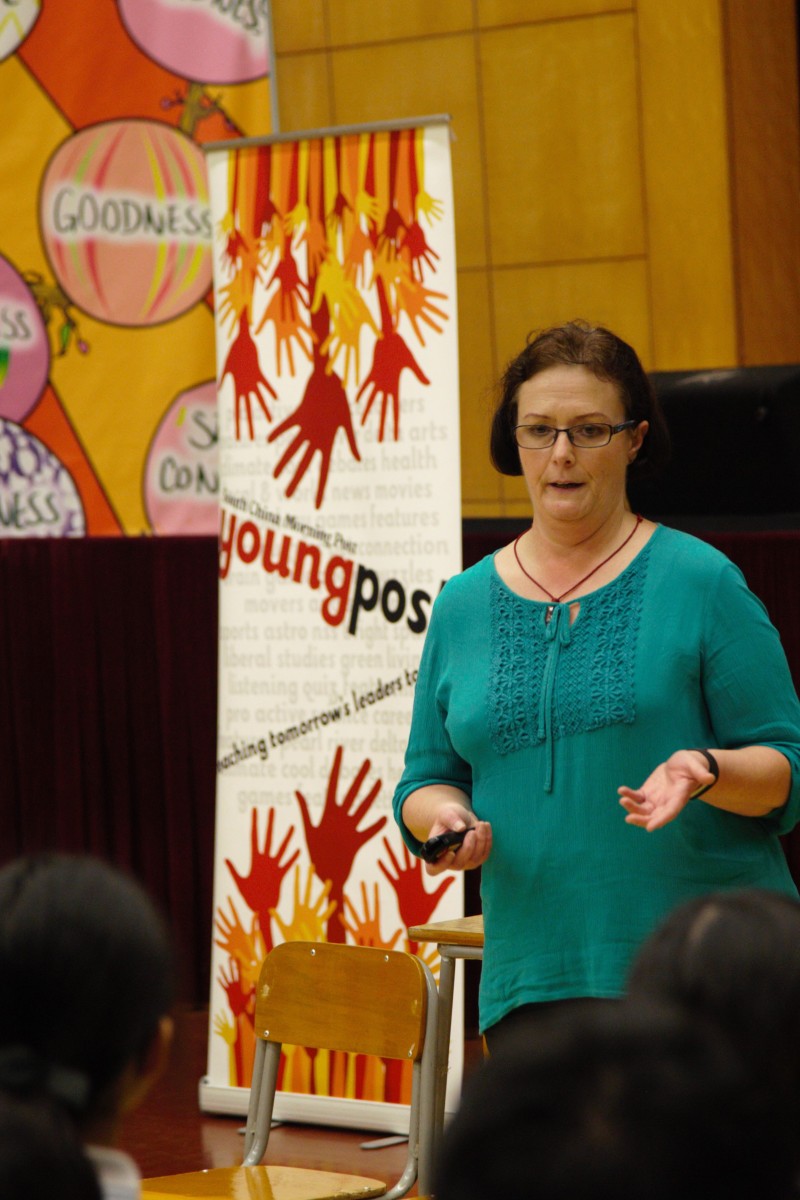
As part of the SOTY annual roadshow, students at Munsang College got a crash course in journalism - and what sets it apart from fake news
 Ramsay says that it is a reporter's job to to uncover and tell the truth.
Ramsay says that it is a reporter's job to to uncover and tell the truth.It’s a journalist’s job to uncover and tell the truth. But in the age of fake news, it can be hard to know who to trust. Last week, Young Post editor Susan Ramsay spoke to students at Munsang College (Hong Kong Island) about how to sift fact from fiction when scrolling down your news feed.
The talk was part of the South China Morning Post and Hong Kong Jockey Club’s Student of the Year roadshow, and offered an opportunity to speak to students one-to-one about navigating the world of news and media.
Thanks to online news-sharing platforms, anyone can take on the role of a journalist these days. While that can be a positive thing that allows people to share knowledge and information, it also makes it difficult to keep track of where information is coming from and how reliable it is.
Yet, what real journalists do sets them apart from other online publishers, explained Ramsay, and there are ways to spot the difference. Ramsay said students should ask seven questions to determine whether a story is real or fake:
1 Is it real?
2 Is it well written?
3 Is it news, or opinion?
4 Is it supported by facts?
5 Is it biased?
6 Is the bias clear or sneaky?
7 Why was the story written?
Asking yourself whether an article has a hidden agenda or is properly supported by facts will help you make up your mind about how much faith you should put in it. Casting a critical eye over news can be a useful habit, because even “real” pieces may not be telling the whole story.
With many years of journalism under her belt, Ramsay was happy to share her experiences with the Form Five students.
When asked why journalists are often very critical of public figures rather than writing good things about them, Ramsay said that it’s a reporter’s job to provide answers to the readers’ questions. However, journalists also need to make sure their story is worth telling and interesting to the reader. Often, people aren’t very interested in reading good things about public figures.
One student, Peter Chan, asked whether Ramsay regretted choosing journalism as a career – she had joked earlier in the meeting that the students would be wise not to choose it. Now, however, she said: “Never, never, never have I regretted being a journalist. It is my personality. I’m one of those kinds of people that if something is wrong, I want to tell people about it so that it can be fixed.
“I’ve had so many different experiences. I have watched history unfold before me.”
Another student, Tomson Tang, asked Ramsay about the importance of having a strong online presence, given the popularity of digital media nowadays. Ramsay assured Tomson that Young Post has an online edition.
“If you don’t know that we are online, that’s my fault,” she admitted. “Young Post strives to reach students through print and online, as it is a publication especially for teenagers.”
Finally, Ramsay was asked to use one word to describe her career. She pondered, and tried to make up her own word, before eventually settling on “serendipity” – the occurrence of events by chance in a way that is beneficial.
The students left the talk with a keener sense of what makes a credible news story. Student Nigel Yuen said he’d learned more about the principles of reporting, while Tomson said he’d be able to spot fake news more easily in future.
Fake news may not go away any time soon, but having the right tools to help you identify it is the first step to tackling it.
Edited by Charlotte Ames-Ettridge